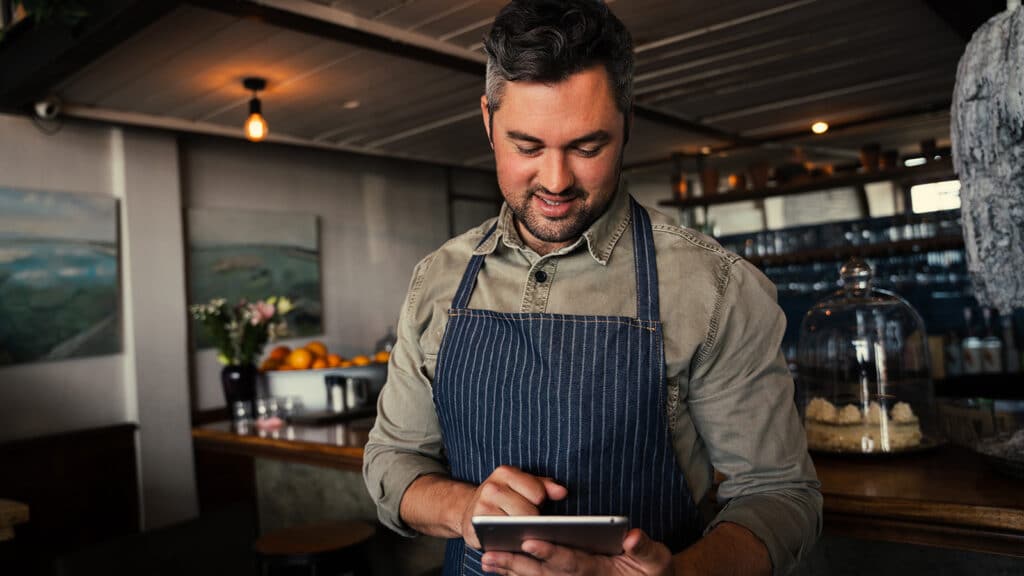Third-party marketplaces and direct online ordering channels have paved a whole new avenue of opportunity to serve new and existing customers. Many restaurateurs have jumped on this profitable bandwagon by adding their restaurant to third-party digital menu apps. The adoption of these marketplaces has steadily increased over the past decade, but the pandemic catapulted this adoption even further.
While there are many elements to the perfect digital storefront, arguably one of the most important aspects a restauranteur should master is their digital menu. Operators must be strategic with their menu, from the dishes chosen to include to the management of it on multiple platforms. If all the key components of a strong digital menu are considered, your restaurant’s digital storefront will be in very good shape.
On the other hand, if your restaurant’s menu is packed full of menu options, and small—but important—details such as pricing and availability are incorrect, third-party marketplaces will not work in your favor. The customer’s experience navigating a restaurant’s digital menu can directly impact their perception of the brand positively or negatively. This places a heightened importance on optimizing each menu for its respective platform to ensure a seamless ordering process. If not, customers can become overwhelmed by the menu and experience what we call “decision paralysis.” And decision paralysis almost always leads to cart abandonment.
A few reasons a diner may experience decision paralysis or cart abandonment are:
- Too many menu options
- No descriptions or pictures
- Lack of add-ons such as additional sauces or condiments
- Difficulty finding popular items
- Too many (or too few) modification options
Don’t let this scare you away from using these digital menu apps, just take it from us. We’ve seen restaurants do it right. We’ve also seen them do it wrong. And we’re here to help share some of the tips we’ve learned along the way to help your restaurant brand see the greatest success on third-party marketplaces.
The Four Ps
Product, Placement, Presentations, Packaging
Following the Four Ps of your digital menu strategy will help to fine tune your digital presence, so every single consumer browsing your restaurant will have no trouble getting the information they need to make that decision to order your food. In the sea of third-party marketplace competition, there is no room for error.
Product
An important thing to remember is that a bigger menu does not always mean a better menu. Pare down the number of items on your delivery menu.Before uploading your entire menu to a third-party marketplace, STOP. We recommend doing an analysis of your restaurant’s offerings and creating a delivery menu that consists solely of top performing items that travel well. That doesn’t mean you should stop offering certain items all together. Just start smaller when it comes to off-premise.
Placement
Be intentional with how your delivery menu is engineered. When a potential diner selects your restaurant, you want to make a strong first impression. The first few seconds will determine if they continue to scroll on your page, or retreat and find a different restaurant.
Customers will subconsciously order the physical top two menu choices more than any other item. Therefore, you should place high profit margin items toward the top. You don’t want the first thing they see to be smaller items such as a side of fries or additional sauces.
Presentation
Present each dish on your menu in an enticing and descriptive way. In this new world of digital, direct interaction with customers is sparse. You no longer have a server to answer any questions they may have about your dishes. In lieu of that face to face interaction, make sure you have descriptions and pictures that help pull in customers and entice them to order from your restaurant.
Packaging
Ensure each menu item is properly packaged for transport. Inside the four walls of your establishment, you want customers to have the best dining experience possible. And while delivery makes this a bit more different to control, having the proper packaging, is an easy way to ensure your food is transported safely and properly and delivered at the right temperature.
When the competition on third-party marketplaces is so fierce, don’t have improper packaging seal your fate. Keep customers coming back by creating an enjoyable dining experience no matter where your food is being consumed.
For more on the four Ps check out our whitepaper, “Optimizing Your Digital Off-Premise Menu.”
Easy Menu Management
Chowly’s MenuSync and MenuMatch
Now that you’ve got the basics of the four Ps down, it’s time to strategize how you can efficiently manage your third-party storefronts. At Chowly, we have found that the average restaurant makes menu updates at least once per month. It’s also estimated that over 50% of restaurants manage 6 or more menus. Think about your own experience updating your third-party menus. Let’s take a closer look at just how tedious this management process can be.
In the age of COVID, it may seem like your hours, menu offering, and availability are constantly in flux. With government mandates and sanctions changing at the drop of a hat, so is your digital storefront. Let’s say you decide to reduce your delivery hours from 10am-1am to 11:30am-10pm, trim 15 items from your menu, and update your pricing on your 5 most popular dishes. Now take into consider these changes must be made to all 4 marketplaces your restaurant is currently on. That comes out to roughly 88 manual changes you need to make to your digital storefronts. So, it’s likely you or your restaurant manager is stuck spending hours logging onto multiple dashboards making these tedious changes, wasting precious time and dollars that could be spent elsewhere.
Here are the top four elements of your digital storefront that should always remain accurate and up-to-date.
- Hours
- Consider having your delivery hours 30 minutes- 1 hour less than your actual hours. This ensures your able to fulfill all delivery orders before continuing with your usual closing procedures
- Item Availability
- There is nothing worse than forgetting to 86ing an item in time before it gets ordering on a delivery app
- Limited-time/Seasonal offers
- Pricing
Even after all changes are said and done, the visibility into these third-party menus is still limited. Locating an error is oftentimes impossible and just one small discrepancy such as item availability can throw a wrench in your operations and even result in an unhappy customer. Leveraging an integration solution such as Chowly’s MenuSync or MenuMatch ensures you have a seamless and easy way to manage the plethora of third-party menus.
Once you have your off-premise operations running like a well-oiled machine, you will find that third-party marketplaces are not so daunting. Learn more about how Chowly streamlines this process and try a demo here.



